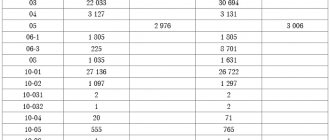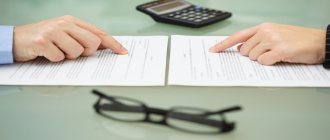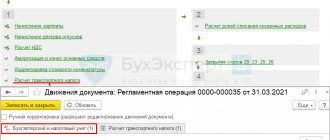7.Assessment of the business activity of the enterprise.
Business activity in the financial aspect is manifested in the speed of turnover of funds.
The turnover rate is the number of turnovers that the capital of an enterprise or its components make during the analyzed period.
The turnover period is the average period during which the funds invested in production and commercial operations are returned to the economic activities of the enterprise.
The duration of funds in circulation is influenced by various internal and external factors. External factors include:
- industry affiliation;
- scope of activity of the enterprise;
- the scale of the enterprise's activities;
- the impact of inflationary processes;
- the nature of economic relations with partners.
Internal factors include:
- effectiveness of asset management strategy;
- pricing policy of the enterprise;
- methodology for assessing inventory and inventories.
To analyze the business activity of an enterprise, two groups of indicators are used:
- General turnover indicators.
- Asset management indicators.
Calculation of general turnover indicators
- The coefficient of total capital turnover (resource productivity) shows the efficiency of use of property and reflects the speed of turnover over the period of the entire capital of the enterprise.
Kob.ob = Sales proceeds/Average annual value of assets.
Cob.rev = 0.2 start
Cob.rev = 0.1 end
Conclusion:
The total capital turnover ratio (resource productivity) has decreased, which indicates a decrease in the efficiency of use of property.
Shows that the turnover rate of all funds of the enterprise has decreased.
- The working capital turnover ratio shows the turnover rate of all working capital of the enterprise, both material and monetary.
Kob.ob.s = Sales proceeds/Average annual cost of current assets.
Cob.rev s = 0.2 start
Cob.ob.s = 0.1 end
Conclusion:
The working capital turnover ratio has decreased, i.e. our working capital ceased to participate in the production process. This means that at the end of the period the enterprise will receive 10 kopecks less from each ruble of this type of asset than at the beginning of the period.
- The return ratio of intangible assets shows that intangible assets are not used.
- Return on assets shows the efficiency of using only the fixed assets of the enterprise.
Ф = Sales proceeds/Average cost of fixed assets of the enterprise.
F= 20 start,
Ф = 9.8 end.
Conclusion:
During the calculation period, capital productivity decreased; this dynamics reflects a decrease in the efficiency of use of fixed assets and other non-current assets.
- The return on equity capital ratio shows the rate of turnover of equity capital and how many rubles of revenue fall on 1 ruble of invested equity capital.
Kot.s.k = Sales proceeds/Average cost of equity capital.
Kot.s.k = 31.2 start
Kot.s.k = 12.2 end
Conclusion:
The return on equity capital ratio has decreased, which indicates that the rate of equity capital turnover has decreased.
Calculation of asset management indicators
- Material turnover. This indicator indicates how many days, on average, inventory turns over in the analyzed period.
Ohm.s = (Average cost of inventories x T) / Sales revenue,
where T is the number of days in the analyzed period.
Ohm.s = 254.4
Ohm.s = 511.1
Conclusion:
This figure has increased.
- Cash turnover shows the period of cash turnover.
Od.s = (Average cost of funds x T)/Proceeds from sale.
Od.s = 0.08
Od.s = 9.53
Conclusion:
The period of cash turnover has increased.
- The receivables maturity period shows how many days, on average, a company's receivables are repaid.
SD.z = (Average value of accounts receivable x T) / Sales proceeds.
SD.z = 266.40
SD.z = 541.82
Conclusion:
The repayment period for accounts receivable has increased. An increase in this indicator is an unfavorable trend
- The repayment period of accounts payable shows the average period of repayment of the enterprise's debts for current obligations.
Sk.z = (Average value of accounts payable x T)/Proceeds from sale.
Sk.z = 499.47
RMS = 1036.15
Conclusion:
The repayment period of accounts payable for current obligations has increased; this increase has an unfavorable effect on the liquidity of the enterprise.
Funds turnover indicators
Turnover ratios are indicators of the business activity of an enterprise and allow one to assess the effectiveness of asset and capital management of the enterprise.
The basis for their calculation is revenue from sales of products or services, its ratio to the average annual size of assets, receivables and payables.
The turnover ratio is a financial ratio showing the intensity of use (turnover rate) of certain assets or liabilities.
Concept - what is it?
So, in general terms, the return on equity indicator is denoted by the abbreviation ROE - Return On Equency.
The coefficient clearly demonstrates what economic effect the company was able to achieve from investing its own financial resources in production. To some, this indicator may seem identical to return on assets. This is not entirely true. The most important difference is that return on equity does not show the performance of all the assets of the enterprise, but only that part of them that is the property of the owners of the company.
Obviously, calculating the indicator makes sense only if the enterprise has its own capital. In other cases, the calculation will simply give negative values that are unsuitable for analysis.
The return on invested capital (ROIC) indicator takes into account the efficiency of using not only the organization’s own capital, but also borrowed funds.
Asset turnover
Asset turnover is a financial indicator of the degree of intensity of use by an organization of the entire set of available assets.
Asset turnover formula:
Asset turnover = Revenue / Average annual value of assets
Data on revenue can be obtained from the “Income Statement”, data on the value of assets can be obtained from the Balance Sheet (balance sheet).
To calculate the average annual value of assets, find their amount at the beginning and end of the year and divide by 2.
Based on the line numbers of the balance sheet and the Income Statement, the formula for the asset turnover ratio in Form 1 and Form 2 can be displayed as follows:
Asset turnover on balance sheet:
Asset turnover = (line 2110) /((line 1600 at the beginning of the year to + line 1600 at the end of the year) / 2)
Where:
Page 2110 - revenue from form 2;
Page 1600 - assets from Form 1.
There is no specific standard for turnover indicators, since they depend on the industry characteristics of the organization of production.
If the asset turnover ratio is 1.5, this means that for every ruble of assets there are 1.5 rubles. revenue.
When the indicator is less than 1, asset turnover is low, and the income received does not cover the costs of acquiring assets.
Where to look for the ROE indicator and which services publish it
The formula for return on equity ratio is not that complicated, so it is quite possible to calculate the indicator yourself. Moreover, the financial statements of companies are open to everyone.
But for the convenience of investors, specialized portals have been created, where not only the final figure is calculated, but also a full analysis is carried out. Like, for example, on the site gurufocus.com.
You can also use finance.yahoo.com. Information on each company is presented there, and Return On Equity is located in the Statistics tab.
I also recommend reading:
Unemployment rate as an economic indicator
What does the unemployment rate tell investors?
Among the Russian-language services, you can use, for example, the same smartlab.ru. Finding profitability indicators for large companies, especially foreign ones, is not difficult. The situation with small Russian enterprises is much more problematic. In such situations, you should make calculations yourself and find data from the company’s financial statements. For calculations, you need to take the indicator of equity capital and net profit of the enterprise at the beginning of the reporting period.
Turnover of working capital (assets)
Turnover of working capital (assets) shows how many times during the analyzed period the organization used the average available balance of working capital.
According to the balance sheet, current assets include: inventories, cash, short-term financial investments and short-term receivables, including VAT on purchased assets.
The indicator characterizes the share of working capital in the total assets of the organization and the efficiency of their management.
Working capital turnover formula:
Working capital turnover = Revenue / Average annual cost of current assets
In this case, current assets are taken as the average annual balance (i.e. the value at the beginning of the year plus the end of the year is divided by 2).
Working capital turnover on the balance sheet:
Working capital turnover = line 2110/(line 1200 at the beginning of the year + line 1200 at the end of the year)*0.5
Where:
Page 2110 — revenue from form No. 2;
Page 1200 - current assets from form No. 1.
The standard value of the coefficient has not been established.
The value of the indicator varies depending on the field of activity of the company.
The maximum values of the coefficient are for trading enterprises, and the minimum are for capital-intensive scientific enterprises. That is why it is customary to compare enterprises by industry, and not all together.
A higher value compared to competitors indicates intensive use of current assets.
Profitability or return on equity capital - standard value
The main criterion used in assessing return on equity is to compare this indicator with the return on investment in other areas of business, for example, in securities of other companies.
The standard value of ROE is widely used to assess the effectiveness of investments. Typically, investors focus on values from 10 to 12%, which are typical for businesses in developed countries. If inflation in the state is high, then the return on capital increases accordingly. For the Russian economy, 20 percent is considered the norm.
If the indicator goes negative, this is already an alarming signal and an incentive to increase the return on equity capital. But a significant excess over the standard value is also an unfavorable situation, since investment risks increase.
Equity turnover
The equity capital turnover ratio is an indicator characterizing the speed of use of equity capital and reflects the efficiency of enterprise resource management.
The equity capital turnover indicator is used to assess various aspects of the functioning of an enterprise:
- The commercial aspect is the effectiveness of the sales system;
- Financial aspect - dependence on borrowed funds of the enterprise;
- The economic aspect is the intensity of use of equity capital.
The coefficient under consideration may be important for current and potential investors, partners, creditors, and also play an important role in terms of procedures for internal corporate assessment of management quality and business model analysis.
Equity turnover formula:
Working capital turnover = Revenue / Average annual cost of capital
Equity turnover on the balance sheet:
Equity turnover = line 2110 / 0.5 × (line 1300 at the beginning of the year + line 1300 at the end of the year)).
Where:
Page 2110 — revenue from form No. 2;
Page 1300 – line of the balance sheet (total line of section III “Capital and reserves”).
This indicator belongs to the group of business activity coefficients and there is no clearly accepted standard value for it.
A capital turnover ratio of 10 or higher indicates that the company's equity capital is being used effectively and that the company is generally doing well.
Low values of the indicator (less than 10) reflect that the enterprise's own capital is not used effectively, and there are possible problems in the business.







